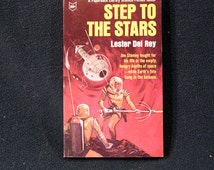

Old Doc Ferrell can’t even spend a day off with his wife and son. It was okay: a good read that started off great, but did not end as a standout. It's a passable novel that might interest hardcore science fiction readers and Golden Age junkies, but it has some big flaws. That said, it's not quite the thriller the back cover makes it out to be the characters are often flat and lifeless, and there's too many named-and-numbered redshirts who show up only once or twice and the narrative sags at the end under progressive amounts of technobabble and the erosion of focus. He did a lot with the information he had on hand-that is to say, not much-and this book has a fascinating time capsule feel to it, and is prophetic to some degree.

Much of the science didn't turn out like del Rey envisioned-the reactors are for making "super-heavy isotopes" for medicinal uses, with power as a secondary output, and the main way to remove "radioactives" from injured workers is curare treatment.īut it's interesting to see what he got right-such as a Chernobyl-style cleanup attempt, and several aspects of how the nuclear plant operates-as del Rey first wrote this three years before Hiroshima, and then revised it the year the first civilian nuclear power plant entered operation (1956). Interesting Golden Age science fiction tale of a meltdown at a nuclear reactor.


 0 kommentar(er)
0 kommentar(er)
